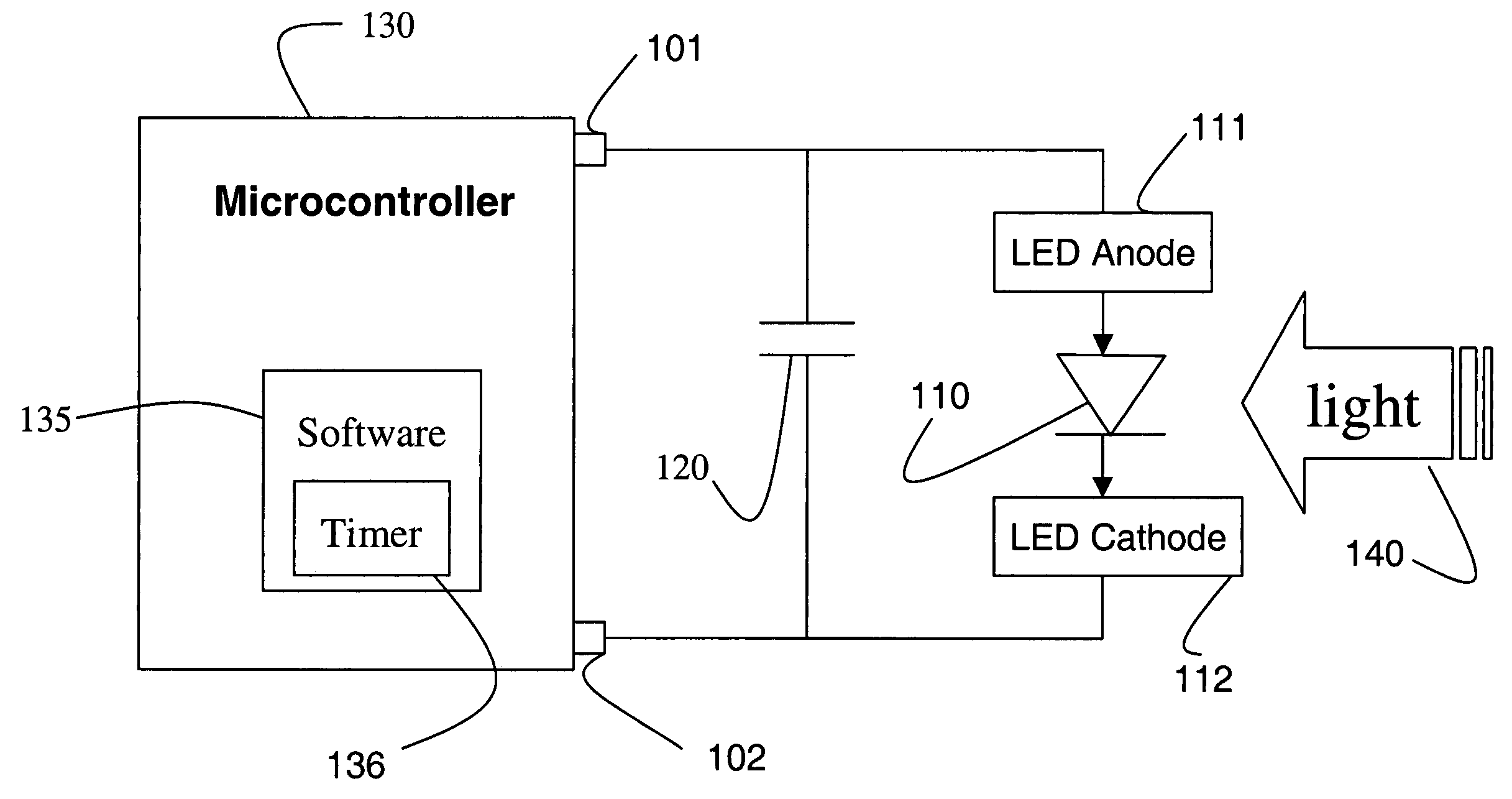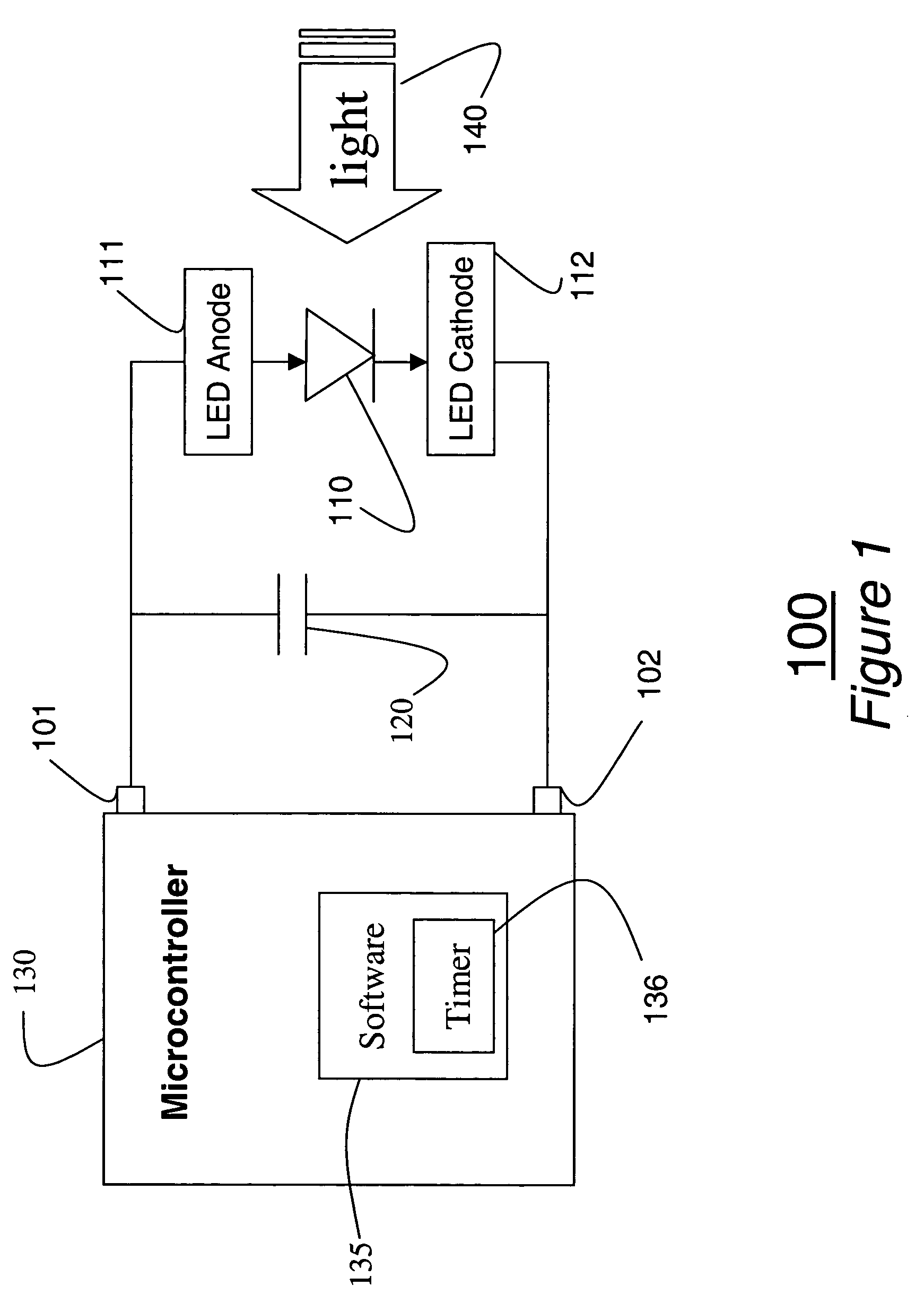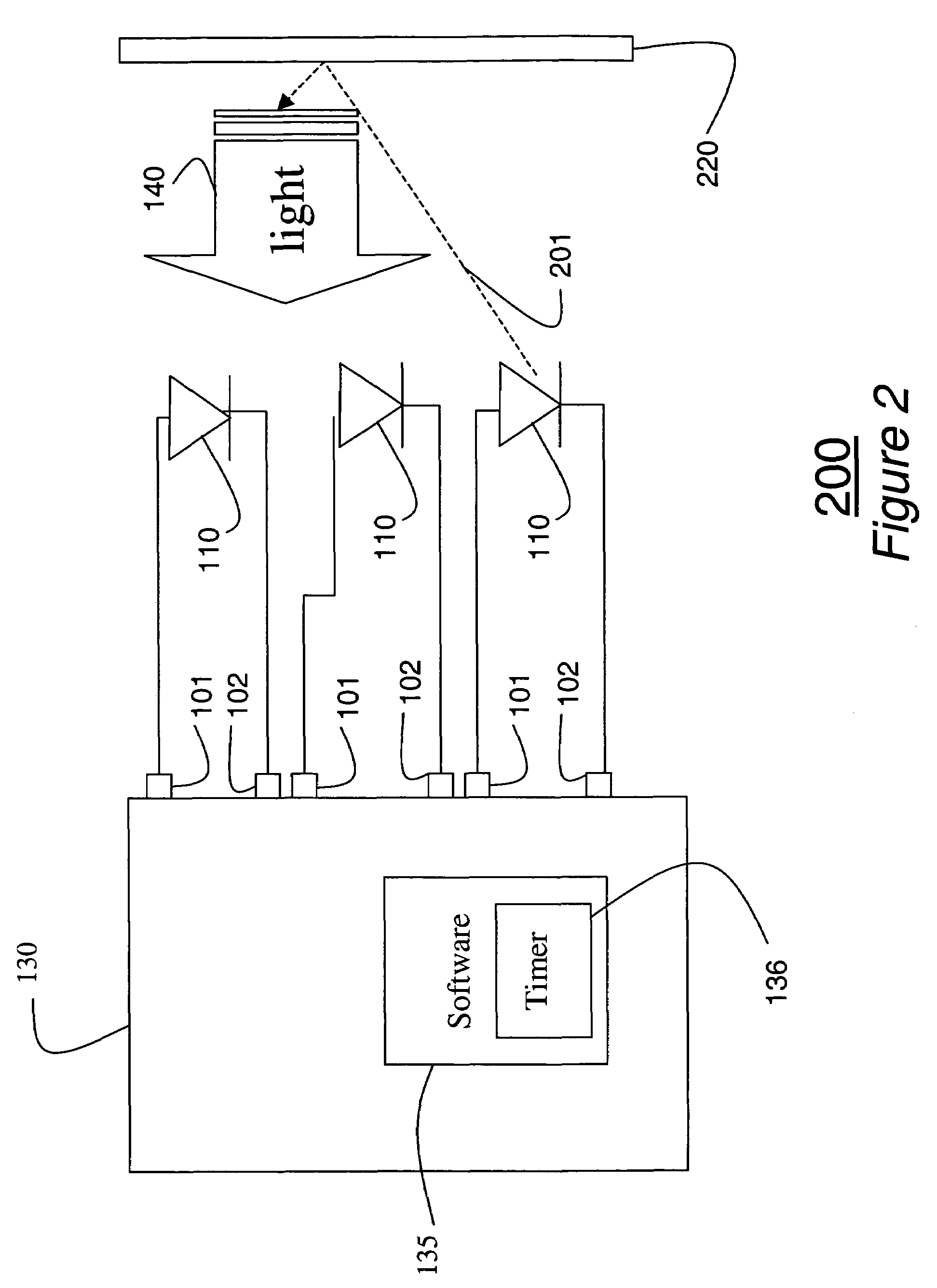Multi-way LED-based surface reflectance sensor and spectrophotometer
a surface reflectance sensor and led-based technology, applied in the field of surface reflectance sensors, can solve the problems of increasing the cost, size and power requirements of the system, and the most expensive component of the system, and achieve the effect of less photocurren
- Summary
- Abstract
- Description
- Claims
- Application Information
AI Technical Summary
Benefits of technology
Problems solved by technology
Method used
Image
Examples
Embodiment Construction
[0032]Basic Bi-Directional LED Sensor Circuit
[0033]FIG. 1 shows an LED-based light sensor 100 according to the invention. The sensor includes an LED 110, a capacitor 120, and a microcontroller 130. An anode 111 of the LED 110 is connected to a bi-directional digital I / O pin 101 of the microcontroller. A cathode 112 is connected to another pin 102. The state of current on the I / O pins 101–102 determines whether the LED 110 emits or senses light. For a detailed description of light emitting diodes operating as both an emitter and a sensor see U.S. patent application Ser. No. 10 / 126,761 “Communication Using Bi-Directional LEDs,” filed by Dietz et al. on Apr. 19, 2002, incorporated herein by reference in its entirety.
[0034]The microcontroller 130 can be a MicroCircuits Inc. PIC 16F876 processor, which as multiple data pins. The microcontroller 100 also has conventional power and communication connections. These connections are not shown for clarity. The microcontroller can execute softw...
PUM
| Property | Measurement | Unit |
|---|---|---|
| parasitic capacitance | aaaaa | aaaaa |
| impedance | aaaaa | aaaaa |
| width | aaaaa | aaaaa |
Abstract
Description
Claims
Application Information
 Login to View More
Login to View More - R&D
- Intellectual Property
- Life Sciences
- Materials
- Tech Scout
- Unparalleled Data Quality
- Higher Quality Content
- 60% Fewer Hallucinations
Browse by: Latest US Patents, China's latest patents, Technical Efficacy Thesaurus, Application Domain, Technology Topic, Popular Technical Reports.
© 2025 PatSnap. All rights reserved.Legal|Privacy policy|Modern Slavery Act Transparency Statement|Sitemap|About US| Contact US: help@patsnap.com



